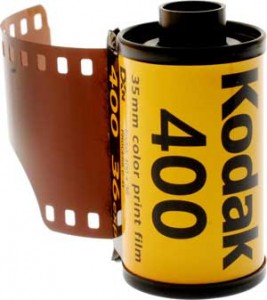 As the progression of technology has proven before, film has gone the way of the VHS, tape cassette, and arguably the paper back novel. On January 19, 2012, Eastman Kodak filed for Chapter 11 bankruptcy protection in U.S. Bankruptcy Court in the Southern District of New York. Kodak made the transition from basing its company on film to digital, but it wasn’t enough. Citigroup will be lending the company $950 million in financing to maintain daily operations. After reviewing Kodak’s bankruptcy court documents, it has become clear that it is Kodak’s juicy patent portfolio that has not only burdened the company but will also hopefully sustain the company as it goes through bankruptcy.
As the progression of technology has proven before, film has gone the way of the VHS, tape cassette, and arguably the paper back novel. On January 19, 2012, Eastman Kodak filed for Chapter 11 bankruptcy protection in U.S. Bankruptcy Court in the Southern District of New York. Kodak made the transition from basing its company on film to digital, but it wasn’t enough. Citigroup will be lending the company $950 million in financing to maintain daily operations. After reviewing Kodak’s bankruptcy court documents, it has become clear that it is Kodak’s juicy patent portfolio that has not only burdened the company but will also hopefully sustain the company as it goes through bankruptcy.
What is interesting about Kodak’s patent portfolio is that one would assume having an estimated $3 billion dollars worth of intellectual property, including digital image capturing patents, would have saved the company from ever having to declare bankruptcy in the first place, especially considering Kodak was the first to invent the digital camera in 1975. As it turns out, the inability to enforce patent licensing rights and infringement damages cost the company more than their impressive patent portfolio could salvage.
Kodak’s intellectual property includes approximately 13,100 foreign patents and trademark registrations or pending registrations in approximately 160 countries, and approximately 8,900 patent and trademark registrations and application in the United States. Additionally, Kodak has an “Imaging Portfolio” made up of “digital capture and imaging systems and services portfolios of approximately 1,150 patents with related foreign and pending applications”. According to the court documents, “Kodak continues to produce patented technologies at a considerable pace, with 590 priority applications filed in 2011 and 482 in 2010. The ownership of these patents contributes to the Company’s ability to develop and market innovative products.”
Over 30 companies have licensed the digital capture portfolio, including LG, Motorola, Samsung and Nokia. It was collecting licensing fees from alleged patent infringers that brought the company to its knees this past year. Kodak claims that when their financial condition started to deteriorate, they began to experience delays in licensing negotiations with Apple, RIM, and HTC, all of which owed substantial royalties for use of Kodak’s digital capture portfolio. In January 2012, in an attempt to bring more revenue into the company, Kodak sued Apple, HTC, Fujifilm, and Samsung for patent infringement. Kodak claims that despite several actions to enhance its cash position, Kodak’s liquidity has been impaired by “difficulties collecting licensing fees from infringers of Kodak’s intellectual property, who Kodak believes have employed a strategy of delay in light of Kodak’s liquidity position, and by substantial foreign and U.S. legacy costs.”
The sale of Kodak’s patent portfolio will be the company’s best and only bet for some revenue. The bankruptcy filing, however, is not helping consumer confidence in the portfolio. Kodak said it best, “the Company has faced difficulties executing the sale due to uncertainty about its financial condition”. Industry insiders are standing back to watch what happens next: either hoping to get a better deal on the patents or wondering if the patents’ value hasn’t been overly inflated.
Tags: bankruptcy, Kodak, patent infringement, Patent Licensing, Patent Litigation




You share in the PLI Practice Center community, so we just ask that you keep things civil. Leave out the personal attacks. Do not use profanity, ethnic or racial slurs, or take shots at anyone's sexual orientation or religion. If you can't be nice, we reserve the right to remove your material and ban users who violate our Terms of Service.